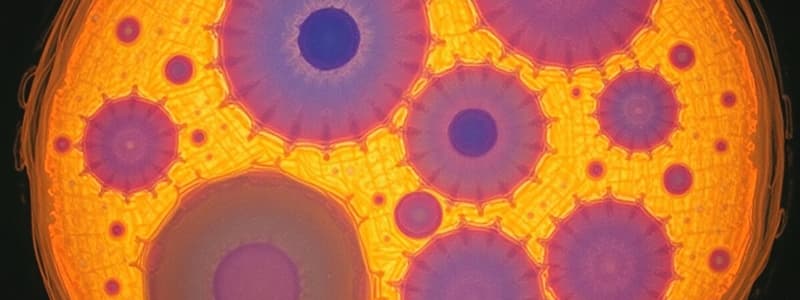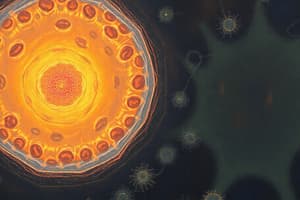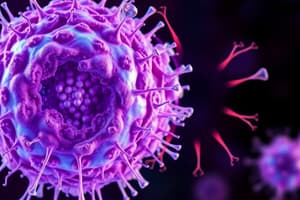Podcast
Questions and Answers
What does being a prokaryote imply about bacteria?
What does being a prokaryote imply about bacteria?
- They contain membrane-bound organelles
- They don't have a nucleus (correct)
- They have complex cell structures
- They are eukaryotic organisms
Which characteristic is true for bacteria being prokaryotes?
Which characteristic is true for bacteria being prokaryotes?
- They have a nucleoid region (correct)
- They always have flagella
- They are multicellular organisms
- They are larger than most cells
Which statement is incorrect about prokaryotic cells?
Which statement is incorrect about prokaryotic cells?
- They lack membrane-bound organelles
- They are primarily unicellular
- They reproduce through binary fission
- They have a defined nucleus (correct)
Which of the following features is generally associated with prokaryotic bacteria?
Which of the following features is generally associated with prokaryotic bacteria?
What is a common misconception about prokaryotic organisms?
What is a common misconception about prokaryotic organisms?
Flashcards
Prokaryotes
Prokaryotes
Organisms with cells that lack a nucleus and other membrane-bound organelles.
Nucleus
Nucleus
A cell's control center that houses its genetic material (DNA).
Nuclear Membrane
Nuclear Membrane
A cell structure that encloses the nucleus in eukaryotic cells.
Eukaryotes
Eukaryotes
Signup and view all the flashcards
Bacteria
Bacteria
Signup and view all the flashcards
Study Notes
Prokaryotic vs. Eukaryotic Cells
- Prokaryotic cells are characterized by their lack of a membrane-bound nucleus and other membrane-bound organelles.
- Eukaryotic cells, in contrast, contain a nucleus and other organelles enclosed by membranes.
- Bacteria are classified as prokaryotes.
Key Characteristics of Prokaryotes
- Lack a nucleus. This means their genetic material (DNA) is not contained within a membrane-bound compartment.
- Do not possess membrane-bound organelles like mitochondria, endoplasmic reticulum, or Golgi apparatus, which are common in eukaryotic cells.
- Their DNA is typically a single, circular chromosome located in a region of the cytoplasm called the nucleoid.
- Possess a cell wall composed of peptidoglycan (in most bacteria).
- Often smaller in size than eukaryotic cells.
- Can have a wide range of shapes, from cocci (spherical), bacilli (rod-shaped), to spirilla (spiral).
Studying That Suits You
Use AI to generate personalized quizzes and flashcards to suit your learning preferences.




